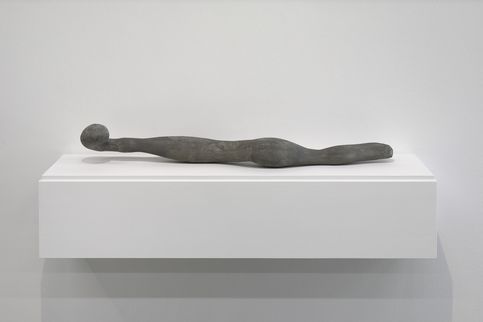Körpernahe Form

Josef Bauer
Körpernahe Form, 1965-1968
Sculpture, Concrete, 100 x 14 x 14 cm
GF0031539.00.0-2023
Artwork text
Following Eugen Gomringer, who is considered the founder of “Concrete Poetry” and coined the term in 1953 in analogy to “Concrete Art”, Bauer developed amorphous objects made of polyester from 1965 onwards, which he described as “tactile poetry”. One of these early works, “Körpernahe Form”, 1965, can be found in the Generali Foundation Collection. In his manifesto “vom vers zur konstellation” (from verse to constellation), Gomringer elaborates on his thoughts on the aesthetic object as a functional object. Bauer takes up this idea and lets people from his circle handle his objects. He produces photo series of these performative stagings. Josef Bauer explored the expansion of sculpture as the interaction of the human body with a sculptural object even before Franz West, who pursued a similar approach from the 1970s onwards with his "Passstücke" (“adaptives”), simple portable objects made of papier-mâché and plaster. For Franz West, his “Passstücke” functioned as prostheses with which he wanted to make neuroses visible. Bauer proves to be a forerunner and pioneer of the “Passstücke” developed by Franz West, a representative group of which can be found in the GF Collection. (Doris Leutgeb)